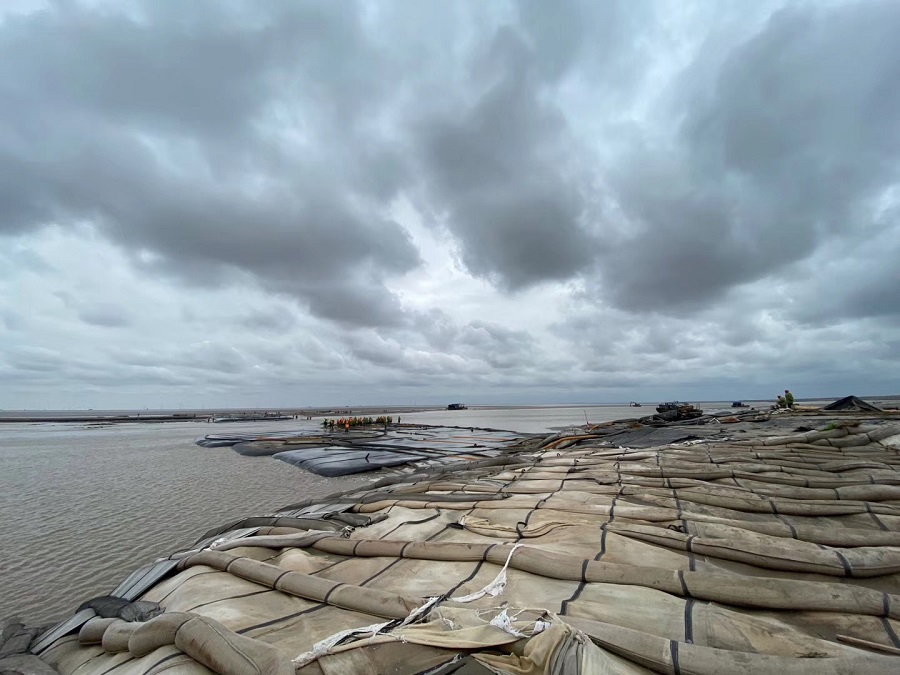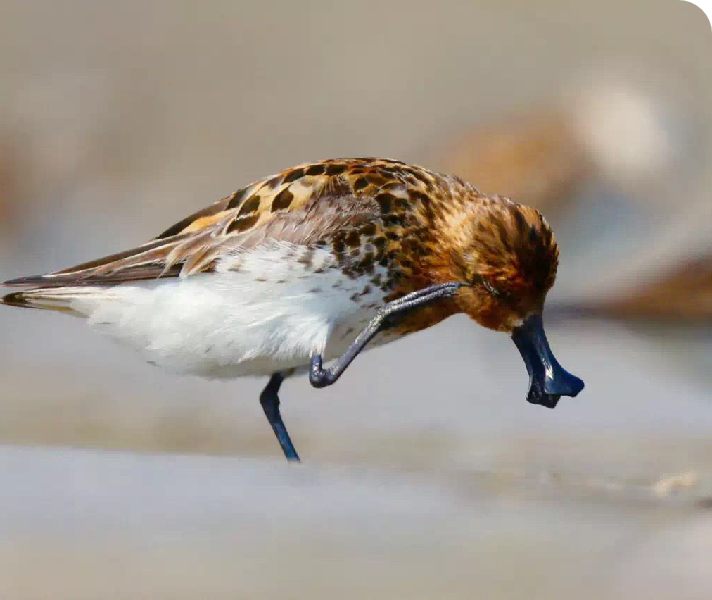On April 7th, China Biodiversity Conservation and Green Development Foundation (CBCGDF) receives reports from volunteers, noting that the partial tidal flat area around the levee of the Tiaozini Reclamation Project (Phase 1) is further subsiding after its first caving-in in 2017. The subsiding area keeps enlarging. The surface of mudflat outside the levee has been washed away, and the caving-in turns into an increasingly serious problem that has threatened the structure of the levee. The subsiding area functions as the natural habitat for Spoon-billed Sandpiper, a critically endangered bird species. Relevant departments are taking measures to remedy.
Volunteers suspect the two caving-in incidents may result from the tidal change under the Reclamation Project. Some publicly expressed concerns on the unpredictable ecological effects brought out by the Project (Phase 1) when it was completed, which would continuously entail adverse impacts on the Project itself as well as the neighboring coastal wetland zone. Therefore, some suggest halting the implementation of the following Project (Phase 2).
Scholar Zhou Cong, who has conducted an evaluation on the Tiaozini Reclamation Project (Phase 1), summarized the Project occupies partial tidal inlet in the Xidagang wetland, and thus changes the hydrodynamic environment of the engineering construction area to some extent. In this context, both Xidagang and Dongdagang wetlands are influenced to change the wanderings, leaving an obvious scour of the tide in the specific area. Outside the tidal creek wandering area, the tidal flat shows a tendency of slow silting-up. At the same time, giving that the construction of causeway hinders the water moving, slowing the flow velocity near the causeway. Therefore, the continuous sedimentation has been formed in the northeast and southeast area around the site of the Reclamation Project (Phase 1).
The construction of the Gezhou Dam leads to the decreasing loss sediment at the estuary of the Yangtze River, thus causing corrasion to the coastal flats, experts say.
Volunteers with that relevant departments and experts would attach great importance to the incident. One the one hand, it is suggested to evaluate the reason for the caving-in and formulate practical measures to safeguard the seashore. On the other hand, the impact assessment at birds and benthos should be carried out and corresponding actions should be prepared for any potential risks.




(Photo credit: CBCGDF volunteers)

(Photo credit: Li Dongming)
Original Chinese article:
http://www.cbcgdf.org/NewsShow/4854/11954.html
By / Wang Yanqing Modified / Maggie
